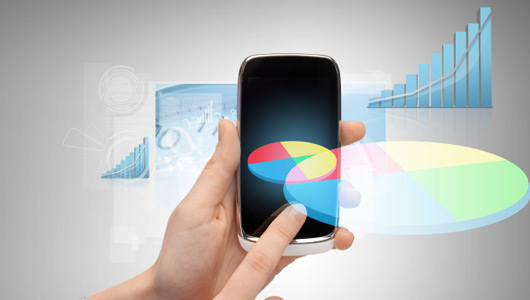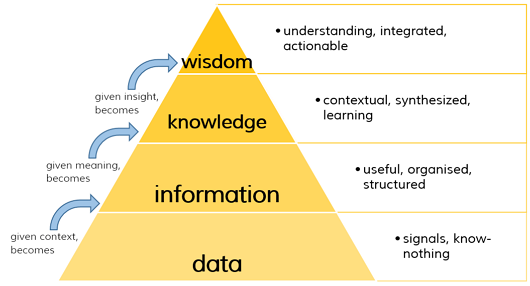It’s 05h45. As you start to open your eyes, you can make out shards of soft light casting patterns on the wall, gently coercing the darkness from the hotel room. Working together with your watch to monitor your sleep patterns throughout the night, your smartphone knew that light alone would be sufficient to wake you in this instance.
[Smartphone]: “Good morning, Kelsey. I’m sorry to have to wake you early, but your flight to New York is likely to be cancelled because of an approaching snow storm. I noticed from your calendar that you have an urgent meeting with Kyle at one-o’clock, and have booked you a ticket on an earlier flight out of Boston. Your transfer will pick you up in half an hour.”
Ten years ago this degree of autonomy would have been scarcely imaginable. Today, the world could not function without it, and your role as the CIO of a leading Real Estate corporation has had to adapt because of it. Was this universal self-governance of technology a result of innovative programming paradigms or standardization? No. The truth is, it came about by simply connecting the most primitive of sensors to the internet… on a massive scale!
This is an example of a disruptive transformation that is taking place within our world of innovation and technology. Business Intelligence has evolved into a comprehensive enterprise that has emerged as an important area of study for both practitioners and researchers.
In the past, Business Intelligence solutions were solely used to increase the efficiency of internal business practises. These applications would allow organizations to extract information from sources (such as Customer Relationship Management (CRM), Supply Chain Management (SCM), Enterprise Resource Planning (ERP) systems) in order to improve management of organizational structure and produce consolidated reports for strategic decision making.
However, during the past century, everything has changed. We have seen a surge in the emergence of global data as it unfolds and grows dramatically right in front of us. Our planet, alongside human behaviour and physical objects, has generated data in a way that we have not been able to see, capture, or hear in a tangible way. Increasingly, through our daily operations, self-created data is being produced at an unprecedented rate. It is all around us. To unlock it, all we need is technology.
Currently, there are over one billion people using the internet which is predicted to grow to over two billion in the next couple of years. Social media has become a powerful platform that has evolved to develop strategic insights in tapping into human behaviour. Pop-up ads are becoming increasingly obvious on social media sites through programmed data specifically launched to interest human behaviour. Marketers are now able to have access to technology that targets consumers according to what they search for online. We are now at a stage where these systems will illustrate Business Intelligence in the areas of customer profiling, market research, market segmentation and much more.
The question is, where does the future lie for Businesses Intelligence? That’s where the term the Internet of Things comes into play. The umbrella term suggests that computers will eventually be capable of generating and collecting data by themselves without human interference. Simply put, the Internet of Things relates to the idea of physical objects communicating and interacting with one another online, through sensors and actuators which could be embedded in physical objects, anything from roadways to pacemakers.
These intelligent activities are all linked through wired and wireless networks. When objects can sense the environment and communicate with each other, they become tools for understanding complexity and have the ability to respond swiftly.
Fundamentally, “Big Data” principles form the mechanism behind the term Internet of Things. To fully understand this process, imagine a pyramid that is injected with information. The information is so vast and heavy that it falls to the bottom of the pyramid layer named “Data”. In the past, we have been overwhelmed with the logistics of how to manage this sea of “Data”. Yet in recent years we now have the ability to apply intelligence systems to transform this “Data” into worthwhile and profitable information. This “Information” layer transforms and injects the data into valuable “Knowledge”. Once we have the necessary layer of knowledge on the targeted market, we inevitably give birth to strategic amounts of “Wisdom” that caps the pyramid.
According to a Gartner representative: “In 2009 there were 0.9 billion sensors and 1.6 billion personal devices - that’s roughly 2.5 billion things that were connected. By 2020, that will grow to become 30 billion things.” This prediction conveys the possibility that technology will indeed be capable of thinking for us.
Take a moment to think about the possibilities if retailers could better understand consumer behaviour by analysing customer movements. Having a customer make contact with the handle of a shopping cart would awaken an array of sensors inside it. Within seconds inexpensive accelerometers would gauge the emotional state of the customer by the manner in which they direct the cart around the store. A locator device, such as Apple’s iBeacons, would track the cart’s movements and record the route that the customer took along with the instances where the cart was stationary in front of particular products. By coupling this data with the company’s marketing system in real time, customers could be immediately offered targeted promotions based on their position within the store, the length of time that they have been deliberating over a purchase, and their buying habits, thereby possibly securing a sale. Similarly, the success of brand activations could be automatically determined through the use of these sensors, and the coupling of the data they generate with the purchase history of the customer.
The possibilities and opportunities become endless, to the point that information will be treated as any other asset in a business. According to Gartner:, “by 2016, over 30% of businesses will be monetising their data.” The term infonomics has been coined, which will allow organizations to value and manage information as a real asset.
Effectively, the planet has grown its own central nervous system. It is safe to say that the 21st century has given birth to real time data, putting us in a position to make more intelligent decisions that will fundamentally change the way we do things in the future. The idea of technology being able to think for us is inevitable.
The question is, how will this technology affect the commercial Real Estate industry? And, more importantly, are you ready for this transformation?








